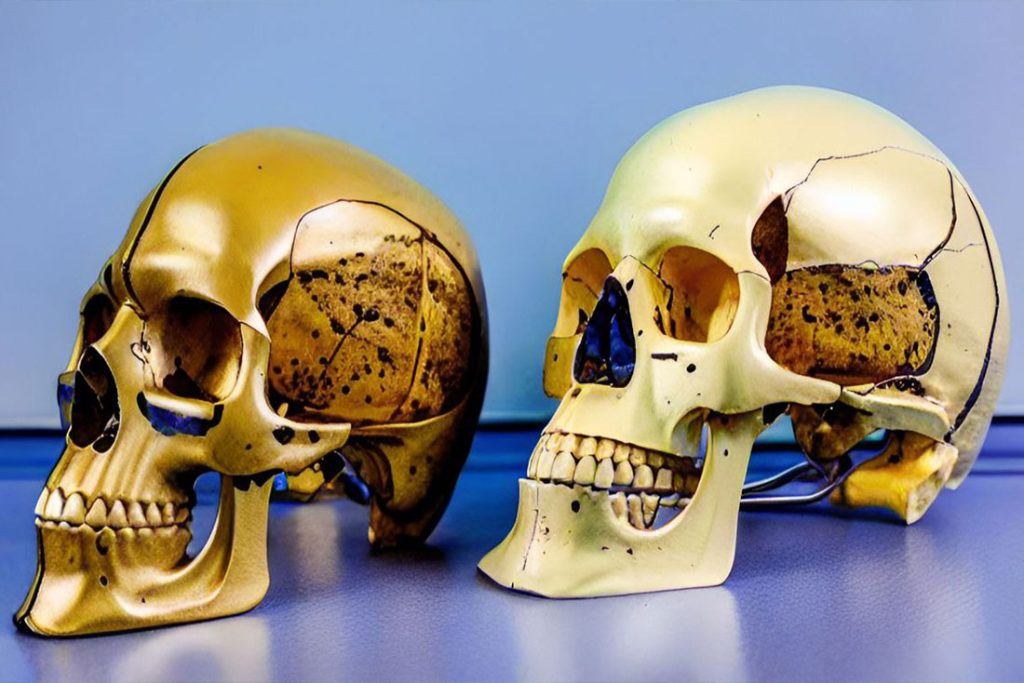Understanding the Cranial Bones: Structure and Function
The cranial bones are integral components of the skull, providing protection and support to the brain while contributing to the overall structure of the head. This article aims to explore the cranial bones in detail, highlighting their individual characteristics, functions, and anatomical locations.

Cranial Bones
Frontal Bone: Shaping the Forehead
The frontal bone plays a crucial role in the structure of the forehead. Positioned at the anterior part of the skull, it forms the forehead and extends to the superior part of the orbits (eye sockets). Key points about the frontal bone include:
1. Location: The frontal bone occupies the anterior portion of the cranium, covering the frontal lobes of the brain.
2. Protection: It provides protection to the front part of the brain against potential injuries.
3. Aesthetic Importance: The frontal bone contributes to the overall appearance and contour of the forehead.
Sphenoid Bone: Foundation of the Skull
The sphenoid bone is a complex, bat-shaped bone that forms the base and sides of the skull. It serves as a central pillar and provides structural support to the cranial vault. Key points about the sphenoid bone include:
1. Location: The sphenoid bone is located in the middle part of the base of the skull, behind the eyes.
2. Articulations: It articulates with numerous other bones, including the frontal, temporal, parietal, and occipital bones.
3. Important Structures: The sphenoid bone houses important structures such as the sella turcica (which houses the pituitary gland), optic canals (through which the optic nerves pass), and the sphenoidal sinuses.
Ethmoid Bone: Separating the Nasal Cavity and Brain
The ethmoid bone is a delicate bone located between the nasal cavity and the brain. It contributes to the formation of the nasal septum and the medial wall of the orbits. Key points about the ethmoid bone include:
1. Location: The ethmoid bone is situated between the orbits and forms the superior and middle nasal conchae.
2. Function: It separates the nasal cavity into left and right sides, facilitating the passage of air and contributing to the sense of smell.
3. Structure: The ethmoid bone consists of a cribriform plate, perpendicular plate, and labyrinth of ethmoid cells.

Parietal Bones: Building the Sides and Top of the Cranium
The parietal bones are paired bones that contribute to the sides and top of the cranium. They join together at the midline of the skull at the sagittal suture. Key points about the parietal bones include:
1. Location: The parietal bones are located on either side of the cranium, forming the majority of the skull’s lateral walls.
2. Protection: They play a crucial role in protecting the brain and providing structural support to the cranium.
Temporal Bones: Supporting the Ear Region
The temporal bones are paired bones that contribute to the sides of the head, particularly the region around the ears. Key points about the temporal bones include:
1. Location: The temporal bones are located on the sides and base of the skull, just above the ear region.
2. Structures: They house the structures of the middle and inner ear, including the ear canal, eardrum, and auditory ossicles.
3. Articulations: The temporal bones articulate with other cranial bones, such as the parietal bone, occipital bone, and mandible.
Occipital Bone: Forming the Back of the Skull
The occipital bone is a single bone located at the posterior part of the cranium. It contributes to the formation of the back of the skull, above the nape. Key points about the occipital bone include:
1. Location: The occipital bone is situated at the posterior part of the cranium, below the parietal bones.
2. Foramen Magnum: It contains the large opening called the foramen magnum, through which the spinal cord passes.
3. Articulations: The occipital bone articulates with other bones, such as the parietal bones, temporal bones, and atlas (the first cervical vertebra).
The cranial bones, including the frontal bone, sphenoid bone, ethmoid bone, parietal bones, temporal bones, and occipital bone, collectively form the intricate structure of the skull. Each cranial bone contributes to the protection, support, and functionality of the brain and surrounding structures. Understanding the unique characteristics and functions of these bones is essential for healthcare professionals and individuals seeking knowledge about the human skull’s remarkable anatomy.











